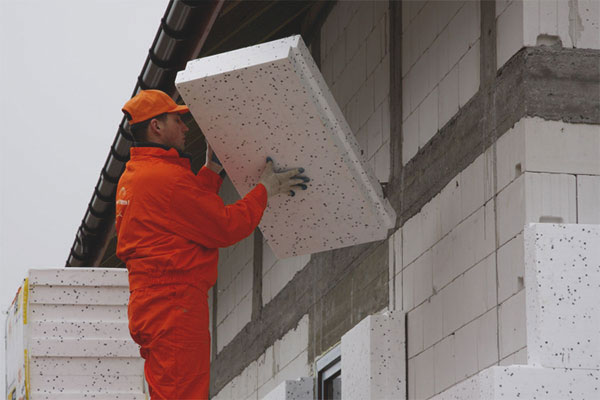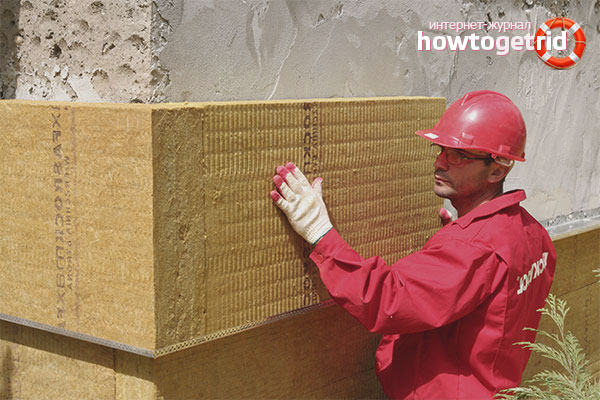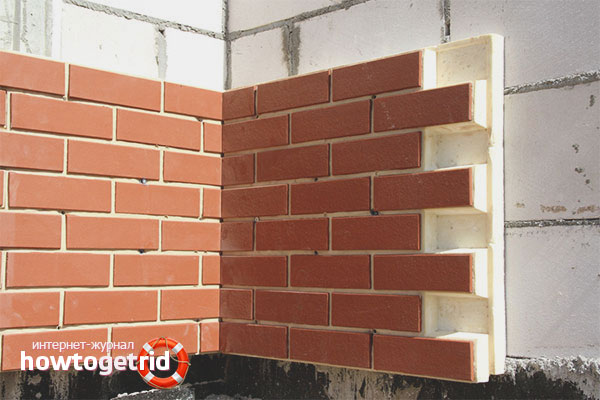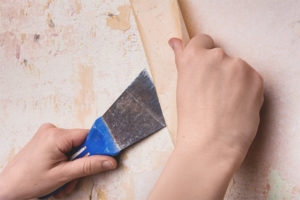The content of the article
Warming of house facades is a very popular procedure not only among owners of private country cottages, but also among owners of commercial buildings, it is also often used by contractors of housing and maintenance offices in the overhaul of urban houses of old buildings.
The main advantages of external works on building insulation are the preservation of the area of the internal space of the premises and the transfer of the border of condensate formation due to the temperature difference of the environment (otherwise called “dew point”) to the outer layer of thermal insulation. In a properly insulated facade, air gaps must be provided to ensure the weathering of the condensate, not allowing it to accumulate, soak into the insulation, reducing its insulating properties, and become a breeding ground for the appearance of mold and fungus.
Than to warm the facade
The range of insulation materials on the shelves of building stores is quite wide. These include glass, mineral and basalt wool, foam plastic, polystyrene foam, penoizol, cotton ecowool, polyurethane foam, various insulating plaster mixes, foam cellular glass. All these materials have different thermal insulation and strength characteristics, and the decision on their use in facade insulation should be made on the basis of the material of the external walls and the chosen technology of work.
Ways of facade insulation
There are not so many reliable and proven ways to ensure the house with external insulation. Much depends on the design of the building itself, on the means laid down for the insulation work, and on the degree of professionalism of the conducting work.
The general rule for home insulation outside is the integrated use of moisture protection and vapor barrier, along with insulation, and compliance with the rules for working with the selected material.
Warming brickwork
This method is also called "well laying". It is used mainly at the stage of building a brick house, laying out a brick, leaving a gap between the thickness of the load-bearing wall and the external row.This gap is filled with insulating material, for example, ecowool or foam plastic, followed by filling with expanded clay. Using this method, it is necessary to provide a strong bond of the facial row and the inner part, making brick dressings at certain intervals.
In the case when facade insulation is carried out on an already completed brick, monolithic or block house, work begins with building up the foundation. For this purpose, a trench is dug along the perimeter of the building being insulated, along the supporting foundation. Its depth should exceed the level of soil freezing, preferably flush with the existing foundation. Waterproofing is installed in the trench, a reinforcement cage is created and concrete is poured. Given that the masonry on the facade, even made of lightweight facing brick, will have considerable weight, you should wait for the solidification of the poured plinth before continuing work.
Sheets of insulation material are attached to the bearing wall with special dowel anchors made of metal and polymer. Anchors have wide pressure pads in the middle, which keep the insulation.Extended shanks of dowel-anchors are embedded in the external masonry and provide a mechanical connection of the bearing and front walls. It is important to provide an air gap between the insulation layer and the outer wall, to prevent the formation of condensate, and to provide ventilation holes in the outermost brickwork. If this is not possible, then it is imperative to cover the insulation material with a vapor-protective film.
"Wet facade"
This technology got its name because of the application of several layers of liquid plaster. On the pre-primed facade walls are glued panels of insulation, as a rule, foam plastic fire-resistant brands. Additionally, the insulation is fixed with polymer dowels with wide caps. Corners and window sills are reinforced with perforated aluminum corners. Then the surface is covered with adhesive composition, which is laid reinforcing fiberglass mesh to prevent cracking. After the glue dries, the facade is covered with a layer of water-repellent protective plaster or polymer. The next stage is decorative plaster.
Curtain wall
This method of insulation is also called "ventilated facade." Its basis is the installation of a rigid metal frame around the perimeter of the house. The profile for the frame can be aluminum or steel, with galvanization. A warming material is fastened to the supporting wall with dowels, which is covered with a wind-proof vapor-permeable membrane. Then, facing panels of porcelain stoneware or metal with polymer coating are installed on the external fasteners of the frame. In this case, sealing of the joints and seams is not carried out, and air circulates freely between the outer skin and the insulation, preventing the formation of condensate.
Clinker Thermopanels
This type of insulation material is rigid polystyrene foam or polyurethane foam panels, with clinker tiles on the outside. These panels are installed directly on the bearing wall and fixed with screws or dowels-nails.
Additionally, cement or glue is applied to the inner surface. Installation is carried out in rows from the lower left corner of the building. The gaps between the panels are filled with polyurethane foam, and on top - with frost-resistant grout.Upon completion of the building, the exterior of the building is no different from that insulated using the “well masonry” method, while the cost of materials and the duration of the work are much lower.
Warming "under siding"
When the facade of the building is planned to be finished with siding, different types of stone or glass wool, polystyrene foam, polystyrene foam, and even rolled materials can act as insulation. In the case of the latter, they are attached directly to the walls, and then pressed against the batten crate. If a dense insulating material is used, the lattice framework is first formed, into the cells of which insulation sheets will be tightly inserted. Additionally, the insulation is fixed with dowels with dish-shaped caps, and all joints are glued with mounting tape.
Above the frame grille, filled with insulation, mounted moisture and windproof.Then a counter lattice is constructed from a thin bar, which presses the protective membranes and will act as a base for fixing the siding. Another function of the second grating is the creation of a ventilation gap between the facade cladding and insulation. Ensuring free air circulation is a must to prevent mold and mildew, which develop well in a humid environment.
Video: 10 stages of facade foam insulation













To send
Thanks for the article, but I heard about capatect's WDVS technology, which gives up to 40% heat savings at home, right? I want to try. Or do I need to hire only professionals?